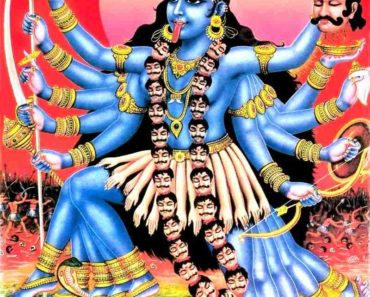Table of Contents
Introduction
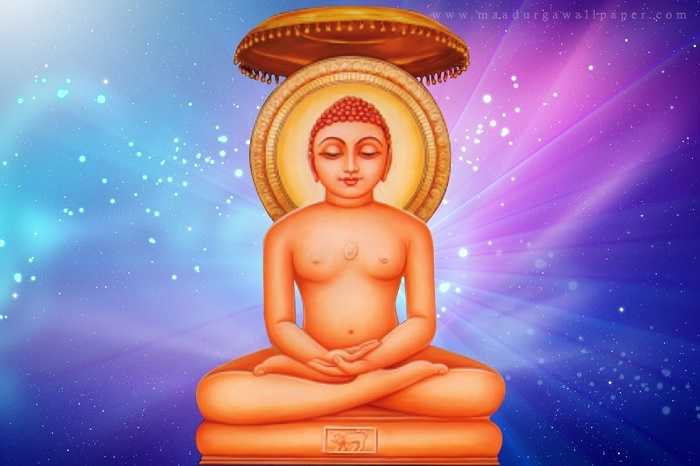
Mahavira (Sanskrit: Vardhamana) was the 24th Tirthankara of Jainism. He was the spiritual heir of the 23rd Tirthankara, Parshvanatha. Mahavira was born into a prominent Jain family in Bihar, India, in the early sixth century BCE. The name of his mother was Trishala, and his father’s name was Siddhartha. They were lay devotees of Parshvanatha. Mahavira finally was called an ascetic at the age of 30 after giving up all of his worldly possessions and leaving home in search of spiritual awakening. After approximately twelve and a half years of intense meditation and severe austerities, Mahavira attained Kevala Gyan (omniscience). In the 6th century BCE, he preached for 30 years and attained moksha (liberation); however, the exact year differs depending on the sect.
In ancient India, Mahavira was an older contemporary of Gautama Buddha, who preached Jainism. Mahavira taught that spiritual liberation entails observance of the ahimsa (nonviolence), Satya (truth), asteya (non-stealing), brahmacharya (chastity), and aparigraha (non-stealing) vows (non-attachment). He taught Anekantavada’s syadvada and nayavada ideas (many-sided reality). Mahavira’s teachings were formalized as the Jain Agamas by Indrabhuti Gautama, his greatest pupil. By the 1st century CE, the scriptures, which were passed down orally by Jain monks, were considered to have been lost (when the remaining were first written down in the Svetambara tradition). The surviving variants of Mahavira’s Agamas are among Svetambara Jainism’s foundation scriptures. In Digambara Jainism, however, their authenticity is questioned.
In ancient India, Mahavira was an older contemporary of Gautama Buddha, who preached Jainism.
Mahavira taught that spiritual liberation entails observance of the ahimsa (nonviolence), Satya (truth), asteya (non-stealing), brahmacharya (chastity), and aparigraha (non-stealing) vows (non-attachment). He taught Anekantavada’s syadvada and nayavada ideas (many-sided reality). Mahavira’s teachings were formalized as the Jain Agamas by Indrabhuti Gautama, his greatest pupil. By the 1st century CE, the scriptures, which were passed down orally by Jain monks, were considered to have been lost (when the remaining were first written down in the Svetambara tradition). The surviving variants of Mahavira’s Agamas are among Svetambara Jainism’s foundation scriptures. In Digambara Jainism, however, their authenticity is questioned.
Mahavira is typically depicted seated or standing in a meditative stance, with a lion emblem beneath him. His oldest imagery originates from archaeological sites in the North Indian city of Mathura and dates from the 1st century BCE to the 2nd century CE. Mahavir Janma Kalyanak commemorates Shri Gautama Swami’s birth, while Diwali commemorates his nirvana (salvation) and first shishya (spiritual enlightenment). Mahavira is known by various names (or epithets) in early Jain and Buddhist literature, including Nayaputta, Muni, Samana, Niggantha, Brahman, and Bhagavan. He is referred to as Araha (“good”) and Veyavi (derived from “Vedas” but meaning “intelligent”) in early Buddhist suttas. The Kalpa Stra is known as Sramana, which means “devoid of love and hatred.”According to later Jain writings, Mahavira’s boyhood name was Vardhamna (“the one who grows”) because the kingdom was prosperous at the time of his birth. According to the Kalpasutras, the gods in the Kalpa Stra dubbed him Mahavira (“the great hero”) because he remained firm in the face of dangers, fears, difficulties, and tragedies. A Tirthankara is another name for him.
Birth and Renunciation
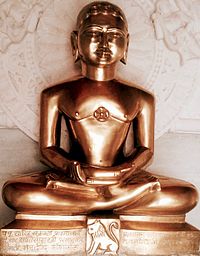
Tirthankara Mahavira took birth in the royal Kshatriya dynasty of King Siddhartha of the Ikshvaku Dynasty and Queen Trishala of the Licchavi Dynasty. The Ikshvaku Dynasty was founded by Rishabhanatha, the First Tirthankara. Mahavira was born in 599 BCE, according to Jains. In the Vira Nirvana Samvat calendar era, his birthday falls on the thirteenth day of the rising moon in the month of Chaitra. Jains call it Mahavir Janma Kalyanak, and it happens in the months of March or April on the Gregorian calendar. Kundagrama, Mahavira’s birthplace, is believed to be near Vaishali, an ancient village in the Indo-Gangetic Plain. Due to migrations from ancient Bihar for economic and political reasons, its current location in Bihar is uncertain. According to the “Universal History” of Jain scriptures, Mahavira had 27 rebirths before his 6th-century birth.
In a heavenly world, just before his last incarnation as the 24th Tirthankara, he encountered a demon, a lion, and a god (deva). His embryo was created in the womb of a Brahman woman before being transferred to Trishala, Siddhartha’s wife, by Hari-Naigamesin (the heavenly chief of Indra’s army), according to Svetambara legends. The embryo-transfer story is rejected by the Digambara tradition.
According to Jain mythology, after Mahavira was born, the god Indra arrived from the sky with 56 digkumaries, anointed him, and performed his abhisheka (consecration) on Mount Meru. These events, which are shown in various Jain temples, are still used in Jain temple rites today. The Kalpa Stra narratives of Mahavira’s birth tales are repeated by Svetambara Jains at the annual Paryushana festival, whereas the Digambaras observe the same holiday without the recital.
Mahavira left his home and family at the age of thirty to live an ascetic life searching for spiritual awakening. He fasted and mortified his body, pondered under the Ashoka tree, and stripped off his garments. The Acharanga Sutra gives a vivid account of his tribulations and self-mortification. Mahavira spent the first 42 monsoons in Astikagrama, Champapuri, Prstichampa, Vaishali, Vanijagrama, Nalanda, Mithila, Bhadrika, Alabhika, Panitabhumi, Shravasti, and Pawapuri, according to the Kalpa Stra. He is reported to have spent the rainy season of his forty-first year as a monk in Rajagriha, which is conventionally dated to 491 BCE. According to Jain texts, Mahavira’s nirvana (death) is said to have occurred at the present-day Bihar town of Pawapuri. Jains celebrate Diwali at the same time as Hindus to honor his life as a spiritual light and the night of his nirvana. On the night Mahavira obtained nirvana from Pawapuri, his primary student, Gautama, has attained omniscience. Mahavira’s nirvana is described differently in different Jain texts, with some portraying a modest nirvana and others detailing elaborate celebrations with gods and monarchs.
The Mahapurana of Jinasena claims that heavenly spirits arrived to fulfill their burial rituals. Nails and hair are the only things of Tirthankaras that are left behind, according to the Digambara tradition, while the remainder of their bodies disintegrates in the air like camphor. According to certain scriptures, Mahavira is said to have given his final sermon to a large number of people during six days at the age of 72. The crowd falls asleep, only to wake up to find that he has vanished (leaving only his nails and hair, which his followers cremate). Mahavira’s nirvana is said to have occurred in 527 BCE according to the Jain vtmbara tradition and 468 BCE according to the Digambara tradition. His jiva (soul) resides in Siddhashila in both religions (the home of liberated souls). The Jal Mandir of Mahavira stands where he has reached nirvana (moksha). His absolute freedom and cremation are depicted in Jain temples and literature artwork, often metaphorically as a little bonfire of sandalwood and a piece of burning camphor.
Teachings
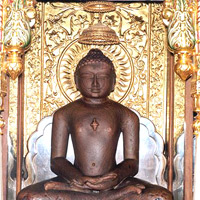
Because of superficial parallels in iconography and meditative and austere activities, colonial-era Indologists thought Jainism (and Mahavira’s followers) to be a sect of Buddhism. As research progressed, the contrasts between Mahavira’s and the Buddha’s teachings became so pronounced that the religions were recognized as distinct. Mahavira preached a “highly comprehensive belief in the soul,” according to Moriz Winternitz (unlike the Buddhists, who denied such elaboration). His austere teachings are higher than those of Buddhism or Hinduism, and he places greater stress on ahimsa (nonviolence) than other Indian religions.
Agamas: Gautama Swami, Mahavira’s Gandhara, collated Mahavira’s teachings (chief disciple). There are twelve portions of the canonical texts. According to Jain legend, Mahavira’s teachings were progressively forgotten after a catastrophic famine in the Magadha kingdom scattered the Jain monks in 300 BCE. Later, monks attempted to reassemble, recite the canon, and re-establish it. Inconsistencies in recitations of Mahavira’s teachings were discovered due to these attempts, and an attempt was made to reconcile the differences in the 5th century CE. Svetambara and Digambara Jain traditions each have their own incomplete, somewhat distinct versions of Mahavira’s teachings, despite reconciliation efforts failing. Jain scriptures conveying Mahavira’s teachings were penned in palm-leaf scrolls in the early years of the common period. chrya Bhutabali was the last ascetic with partial knowledge of the original canon, according to the Digambaras. The teachings of Mahavira, which were the topics of the Agamas, were afterward restored, collated, and written down by some knowledgeable achryas. [92] In the first century CE, chrya Dharasena guided the chryas Pushpadant and Bhutabali as they penned down the teachings. On palm leaves, the two chryas wrote akhagama, one of the oldest known Digambara texts.
Five vows: The five vratas (vows) that ascetics and householders must follow are listed in the Jain Agamas. Mahavira preached the following ethical principles:
Mahavira said that every living being has sanctity and dignity that should be honored in the same way one expects one’s sanctity and dignity to be maintained. The first and most essential pledge in Jainism, Ahimsa, relates to deeds, speech, and thought. Satya (honesty): This applies to both oneself and others. Asteya (non-stealing): “Taking nothing that has not been given” is prohibited. For monks, chastity means abstaining from sex and sensual pleasures, and for householders, it means being true to one’s relationship. Aparigraha (non-attachment): An attitude of non-attachment to property or worldly possessions in laypeople; not owning anything in mendicants.
These principles aim to bring spiritual serenity, a better rebirth, or (ultimately) emancipation to those who follow them. These lessons, according to Chakravarthi, assist people in improving their quality of life. According to Dundas, Mahavira’s emphasis on nonviolence and restraint has been misinterpreted by some Jain scholars as “not being driven by merit from giving or compassion to other creatures, nor a duty to rescue all creatures,” but rather by “continual self-discipline”: a cleansing of the soul that leads to spiritual development and release. Mahavira is most famous in Indian culture for preaching that ahimsa is the highest moral virtue. He taught that ahimsa (nonviolence) applies to all living beings and that damaging any living being in any way results in bad karma (which affects one’s rebirth, future well-being, and suffering).
Mahavira was the foremost authority on ahimsa, according to Mahatma Gandhi. Mahavira believed in the existence of the soul, a belief shared by Hinduism but not Buddhism. Buddhism teaches that there is no such thing as a soul (or self), and its teachings are based on the concept of anatta (non-self). The soul, according to Mahavira, is dravya (substantial), eternal, and yet transient. The metaphysical nature of the universe, according to Mahavira, is made up of dravya, jiva, and ajiva (inanimate objects). Because of karma (the consequences of one’s acts), the jiva is bound to sasra (transmigration). In Jainism, karma encompasses both deeds and intentions; it colors the soul (Lesya), influencing how, where, and what a soul reincarnates after death.
There is no creator deity, according to Mahavira, and existence has neither beginning nor end. In Jainism, there are gods and devils, but their jivas are all part of the same birth and death cycle. The idea behind the spiritual practice is to free the jiva from its karmic debt and enter the domain of the Siddhas, or souls who have transcended reincarnation. Mahavira believes that enlightenment is the result of self-cultivation and self-restraint.
Final Note
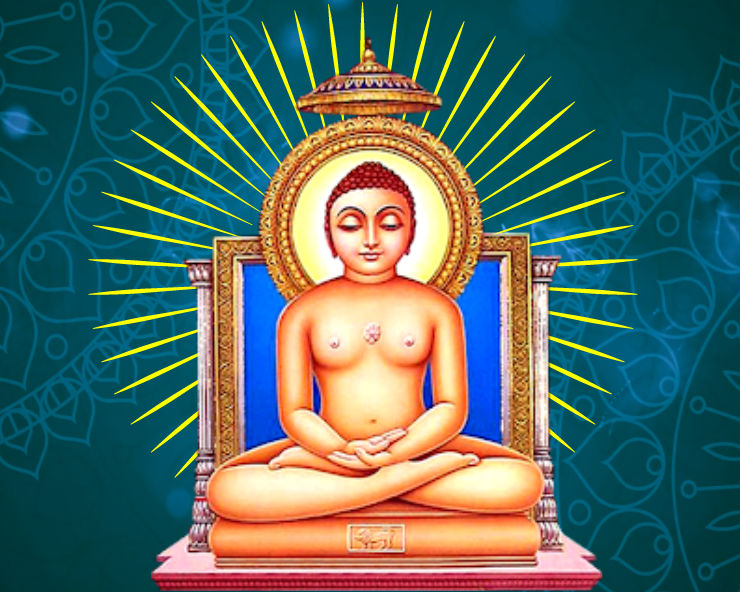
Mahavir Janma Kalyanak and Diwali are two main Jain festivals related to Mahavira. Jains commemorate Mahavira’s birth as the 24th and final Tirthankara of Avasarpi during Mahavir Janma Kalyanak (the current time cycle). The five good episodes of Mahavira’s life are re-enacted during Mahavir JanmaKalyanak. Diwali is a Hindu holiday that honors Mahavira’s nirvana and is celebrated simultaneously. For Jains, Diwali is the start of a new year. Mahavira’s teachings influenced many people. Mahavira declared in India, according to Rabindranath Tagore, that religion is a reality, not just a social convention. Indeed, salvation cannot be obtained solely through the performance of external rituals. Religion cannot distinguish between man and man. — Rabindranath Tagore
In 1974, an event commemorating Mahavira’s 2,500th anniversary of nirvana was held: Few people in the West are likely aware that, for the first time in their long history, mendicants from the vtmbara, Digambara, and Sthnakavs sects gathered on the same platform in this Anniversary year, agreed on a common flag (Jaina dhvaja) and emblem (Pratka), and resolved to bring the community together. For the entire year, four dharma cakras, an ancient symbol of Tirthankara Mahavira’s samavasaraa (Holy Assembly), traversed all of India’s major cities, winning legal sanctions from various state governments against the slaughter of animals for sacrifice or other religious purposes, a campaign that has been a major preoccupation of the Jainas throughout their history.–Padmanabh Jaini

